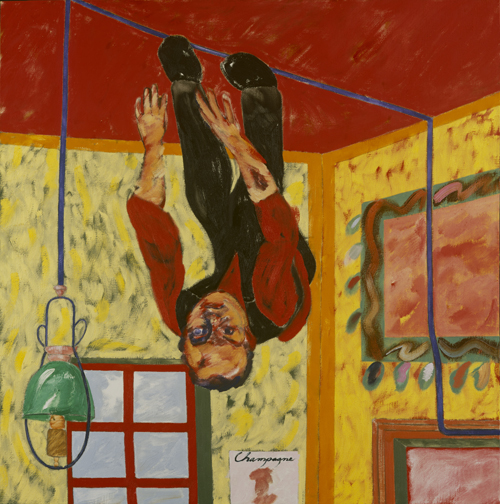The exhibition brings together more than twenty works of four prominent figurative painters of the same generation that bear a strong expressive power: Avigdor Arikha (Rădăuţi, Romania, 1929-2010), Frank Auerbach (Berlin, Germany, 1931), R.B. Kitaj (Cleveland, Ohio, 1932-2007) and Euan Uglow (London, Great Britain, 1932-2000). Looking at reality from different angles, they reveal how fertile imagery can be and that, despite the dominance of abstraction in the twentieth century, there is still space for figuration, which salvages great potential.
Avigdor Arikha, of Jewish descent, could escape from a Nazi concentration camp in his childhood. He fought in the War of Independence in Israel before he settled in Paris, where he carried out his career until his death. Arikha masters the use of colours and the appearance of natural light in his works and captures moments of daily life. Small-sized works show views of Paris, interiors and still lifes, as well as his wife, relatives, friends and nudes.
Frank Auerbach moved to the United Kingdom at the age of eight, escaping from Nazism. Since then he lives and works in London. Auerbach destroys the works that he doesn’t like at the end of each day. He scratches strokes of the brush off the canvas and overlays them again, creating thick layers. His vibrating work of an expressionistic appearance often shows the streets of London or portraits of friends and family.
R. B. Kitaj, also Jewish, studied in New York and Vienna. He served in the United States Army before he lived in London for forty years. After the death of his wife in 1997, he moved to Los Angeles where he died ten years later. His Jewish identity is very present in his work, as well as pictorial references to Degas, Cézanne and the post-impressionists. Symptomatic for his work is the use of bright colours.
Euan Uglow has lived all his life in London but constantly travelled all around the world. His early works show a blurry stroke of brush and gloomy, earthy colours. Later his painting became more precisely. He started using brighter colours, which remind of the pictorial chromatology of the Italian Quattrocento. Characteristic for his work is a meticulous and precise geometry, which decelerates the completion of his paintings. Recurrent topics in his work are still lifes and nudes that hide their faces and bend themselves in various positions.
